One subscriber recently had a question about the cost to service a motorcycle. He likes twins (as many of us do!), but also mentioned that they’re cheaper to service.
Interesting idea, I thought — I suppose fewer of anything does imply lower cost.
But what’s the real difference in maintenance costs for a bike with a higher number of cylinders? Does the number of cylinders affect maintenance cost disproportionately? Is it significantly cheaper to service a bike of two cylinders then three or four?
I decided to do some investigation about the relationship between the number of cylinders and bike maintenance and repair costs — and also to ask my mechanics.
Are you obsessed with motorcycles?
Well, I am. That’s why I created this site — as an outlet. I love learning and sharing what others might find useful. If you like what you read here, and you’re a fraction as obsessed as I am, you might like to know when I’ve published more. (Check the latest for an idea of what you’ll see.)
Stating the Obvious — The Cheapest Bikes to Maintain
Before going too far, many people often wonder what the cheapest motorcycles to maintain are. And yes, the number of cylinders is one important element here.
The cheapest motorcycles to maintain are the ones that have:
- One cylinder (with either two or four valves)
- No (or few) fairings, and
- Wide maintenance intervals.
(But that’s not all! See a bit below.)
For example, take the Yamaha WR250R. It has one cylinder, four valves, and a wide 26600 mile / 40000 km (Europe/APAC manuals) maintenance interval — typical of many liquid-cooled Yamaha motorcycles.
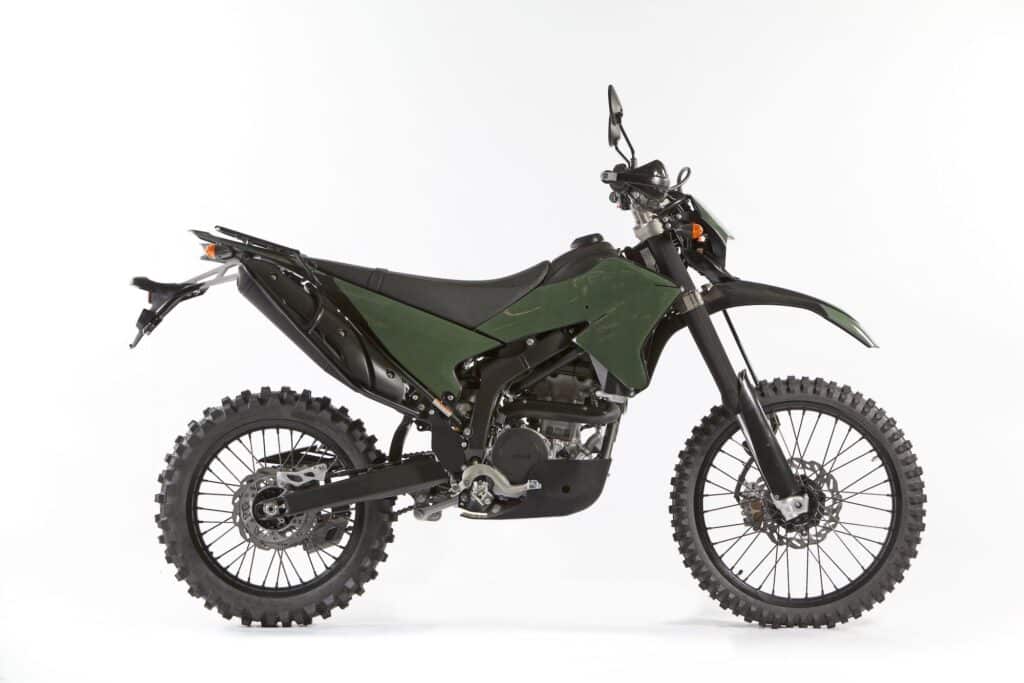
You can get a Yamaha liquid-cooled single cylinder bike and for years just do oil changes and occasional other fluid changes, clean the chain, and occasionally look at the spark plug. Most of your costs will be in gas, and keeping it registered and insured.
Yes, being liquid cooled means you have to replace the coolant every 2-3 years. But that’s relatively easy compared to a valve service. (See here for a discussion of liquid-cooled vs air-cooled.)
You can also go the air-cooled route and pick up something like a Royal Enfield Meteor 350 or a Honda Grom MSX125. These only have TWO valves in the one cylinder (one intake and one exhaust), and it’s even easier to adjust as it’s a screw-and locknut type. But the catch is that you have to do the valve service much more often — at every oil change, actually, which is every 4000 miles or 6000 km. (But how far do you ride your Grom?)
However, having one cylinder is by no means the be-all and end-all of a low-maintenance motorcycle. After all, there are definitely many high-strung single cylinder bikes, like those intended for Motocross or Supermoto racing.
When I asked one mechanic about factors that influence engine reliability, he mentioned that if assessing potential maintenance costs for a motorcycle, he’d think about:
- Brand of motorcycle — some brands make lower maintenance motorcycles (something reflected in consumer opinion about the most reliable motorcycle brands)
- Power output — the higher power a bike, the more high-quality components need to be, and the more stress they’re under
- Distance travelled — the more stress an engine has had, the closer it is to its mean time to failure
So looking at those factors, a very reliable motorcycle choice would be a low-mileage middleweight commuter bike from a Japanese manufacturer. If you want a fun option, something like the Honda CBR650R would be my choice — if you can get it in full power version (in some markets it’s only available in restricted form).
But the CB500 range would be a more sensible choice. Something like the Honda CBR500R. Would that I were more sensible…
At least my Hayabusa, being a known reliable motorcycle and being currently low-mileage, ticks two of those boxes!
Regular Ways in which We Service or Repair Our Motorcycles
First of all, let’s look at all the ways we spend money on motorcycles, other than fuel (a cost which, in 2022, is trending towards infinity).
Common ways we all have to service our motorcycles are:
- Tyres (or “tires”, my North American friends): We replace these very often. Because it needs special tools to get them balanced, even many home mechanics will at most take the wheels off and get a pro to switch the tyres.
- Basic service: oil + filter changes, inspections, and regreasing external points.
- Throttle body rebalancing (if you have more than one): This is a regular service item on some bikes, and recommended on others (but you can often just do it when you sense it’s off)
- Changing other fluids/consumables every few years: brake fluid, coolant if you have it, clutch fluid if it’s hydraulic, shaft drive oil if you have one, and the air filter every so often
- Brake pads: these just wear out over time
- Chains and sprockets (unless shaft / belt drive): These wear out over time, especially if you ride your bike hard, or don’t clean the chain. Belts also wear out.
- Changing fork seals and fork oil: especially if you ride your bike on harsh roads or you do a lot of wheelies!
And then there’s the less common, more expensive service. These are things like
- Valve service: nearly all motorcycles need to have the valve gaps periodically measured and adjusted.
- Changing the spark plugs: they last a while, but at some point they are due for replacement
- Rebuilding suspension components: Occasionally you need to replace shocks / forks, or rebuild them if possible
- Wheel bearings: Replacing ones that haven’t been greased or who just have seen a lot of riding
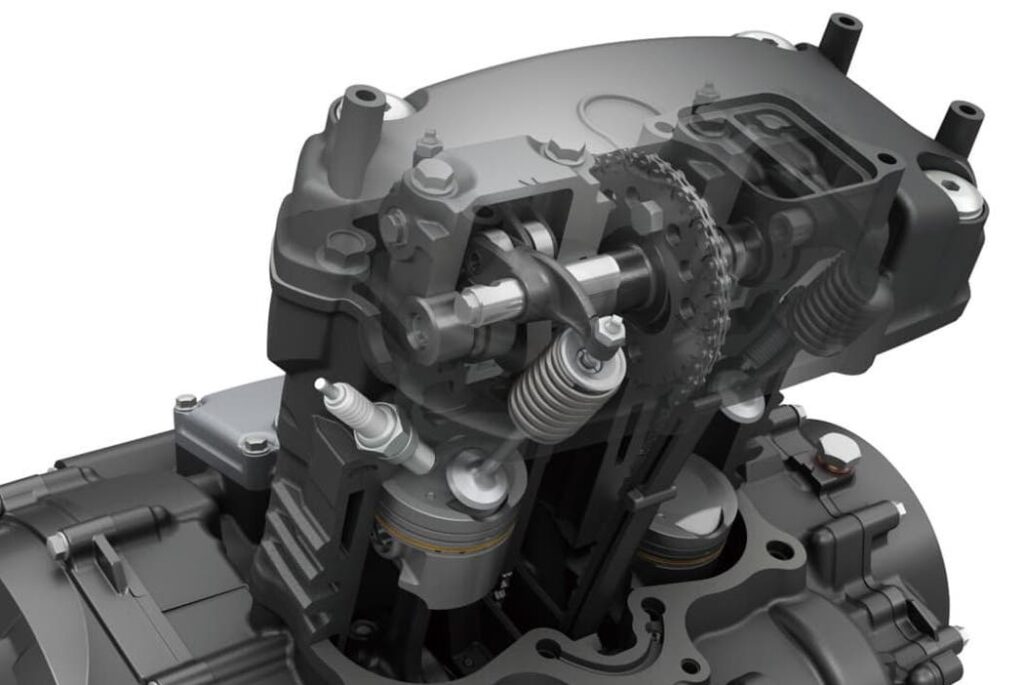
Finally, there’s service that you do if your bike is running rough. This usually entails items like
- A compression test on all the cylinders
- Looking for leaks in air, fluids
The above motorcycle maintenance/repair tasks are of course before more major repairs that would be needed for a bike that has been crashed or neglected for a long time.
Which maintenance/repair costs go up with the number of cylinders?
Looking at all the above maintenance / repair items on motorcycles, there are only a few that increase in cost with number of cylinders:
- The valve service
- Changing the spark plugs,
- Throttle body rebalancing (if needed), and
- Doing compression tests (if needed)
Yes, you do spend more time if you have more cylinders — or more cylinder heads. For example, in my V-twin motorcycles, I had to access both the front and rear cylinder heads to check the valves in each one, and then do four measurements in each valve head.
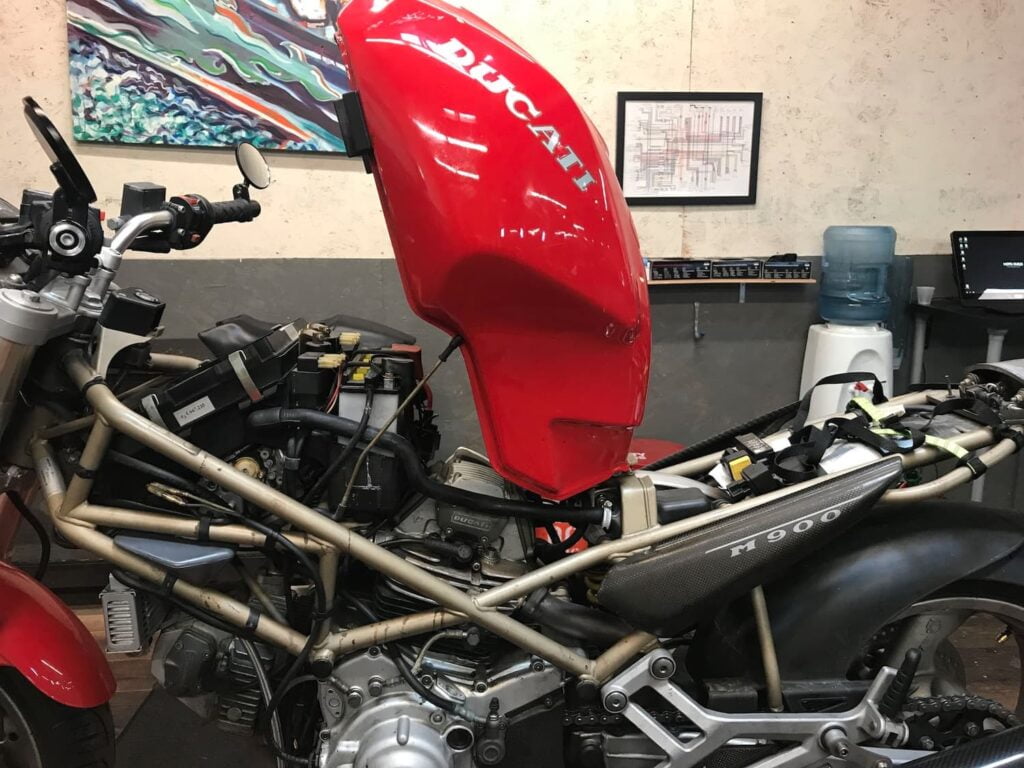
If I were doing a valve service on a one-cylinder bike, my work would have been easier. The easiest valve job would be on something like a Grom or an older thumper: one cylinder, two valves. Just two clearances to check. And access is very easy.
Modern thumpers have four valves for the one cylinder. Still very easy.
But maintenance / repair cost isn’t just relevant to the number of cylinders — it’s also heavily influenced by the cylinder configuration.
But even if I were working on a parallel twin rather than a V-twin, my work would have been easier: just one cylinder head, so less stuff to potentially move out of the way. (I had to remove the battery and some other stuff to get to the rear cylinder on my Ducati.)
Even if I were working on an inline four-cylinder bike, my work would have been comparable. I’d have one cylinder, and then 16 clearances to check: 2 openers and 2 closers for four cylinders.
But all of the above ignores a lot of the cost that goes into doing a valve service: getting to the cylinders. On many bikes you have to remove fairings, the tank, and some other parts, and then get access to the crankshaft so you can turn it and find top dead centre (or do it with another trick).
For example, on a Yamaha YZF-R1 superbike, to do the valve service you have to remove: the seat, the tank, the air filter case, the lower and side cowlings, the throttle body, the air cut-off valve, the radiator, ignition coils, spark plugs, cylinder head cover, and the pickup rotor cover. That takes so long. The actual measurement / adjustment (if any) is just a fraction of the total work.
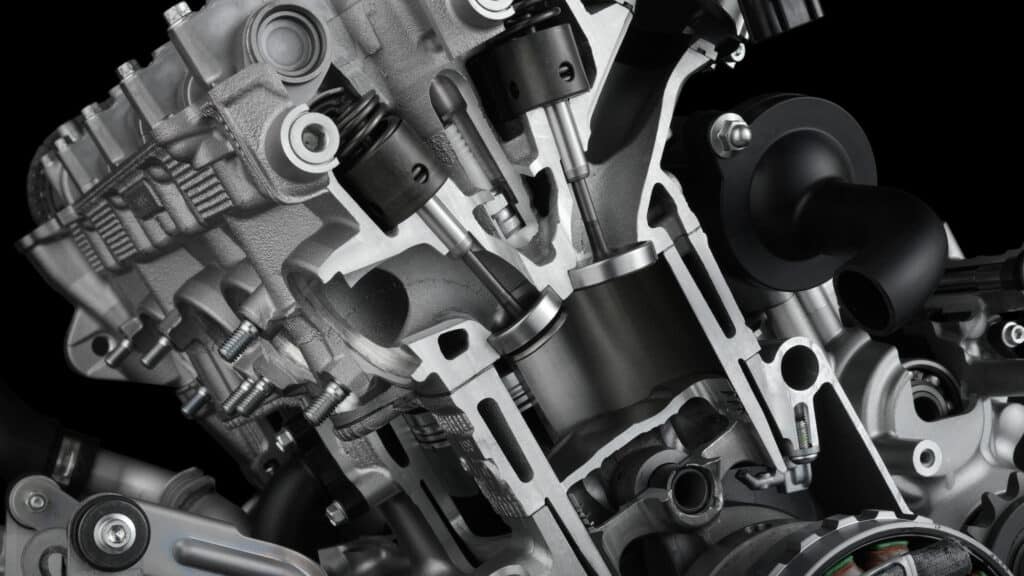
(Not scared off getting a Yamaha YZF-R1 yet? See the buyers guide here.)
Given that on a Yamaha motorcycle the valve service is only every 26600 miles (US manuals) or 40000 km (European/APAC manuals), two fewer cylinders on the R1 wouldn’t dramatically lower the maintenance cost.
If you need to do a compression test (e.g. you suspect you’ve got a cylinder head leak), then you need access to the spark plugs. This will involve removing fairings and some stuff too.
Finally, the throttle body sync. For example, this is required maintenance on my R nineT, which despite being a very modern bike still has cable-actuated throttles, with cables that go to different parts of the motorcycle after a splitter. Cables stretch and wear, and parts move around, so a throttle body sync is something I have to do.
But then, if my R nineT were a parallel twin, then even with a throttle cable I’d likely just have one cable that maybe opened two throttles.
So maintenance cost isn’t just about the number of cylinders — it’s also relevant to the configuration.
What do Mechanics Say about the Number of Cylinders and Maintenance Costs?
As I’m not the expert here, I decided to ask two of my mechanics, Lucy Carrera (who runs her own workshop in SF — and would 100% be the place I’d take my bike to), and Philip Thieme of Nippon Performance in Brisbane, Australia (which is where I’ve taken my last four motorcycles).
I put to them: “My gut feeling is that since most labour cost is pulling fairings and tank off, the actual number of cylinders is a small factor. People will usually spend more money on tyres, fork seals, chains/sprockets etc. than they will on the occasional extra spark plugs or the extra two compression tests / valve clearance checks. What do you think?”
Lucy said:
“Agreed!”
Phil of Nippon had a little more to say:
“I would agree. And power output is probably the next variable. The more power the bike makes, the better its components need to be. I would gauge running cost off make, power output, and distance traveled.
So there you have it. A high-mileage, high-power sportbike from a manufacturer with less reputation for reliability is going to be expensive. But a low-mileage commuter bike from Honda or Yamaha… that’s the cheapest bike for you.
Another item worth examining is the most reliable motorcycles overall. Worth examining, once I have more data. My early list would be middleweights from Honda and Yamaha — but more detail coming soon.

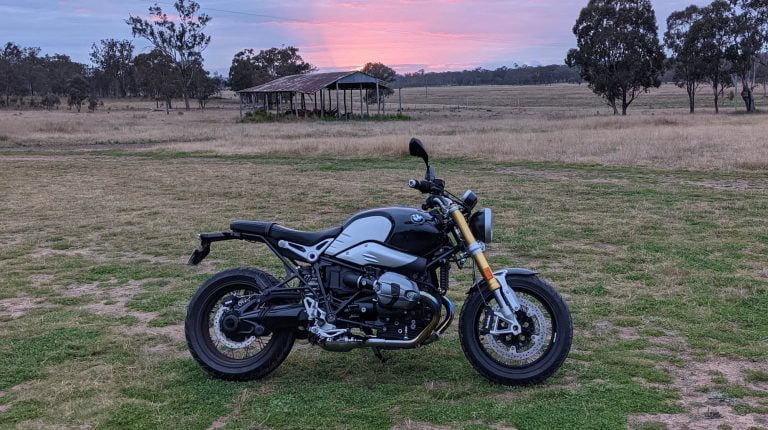
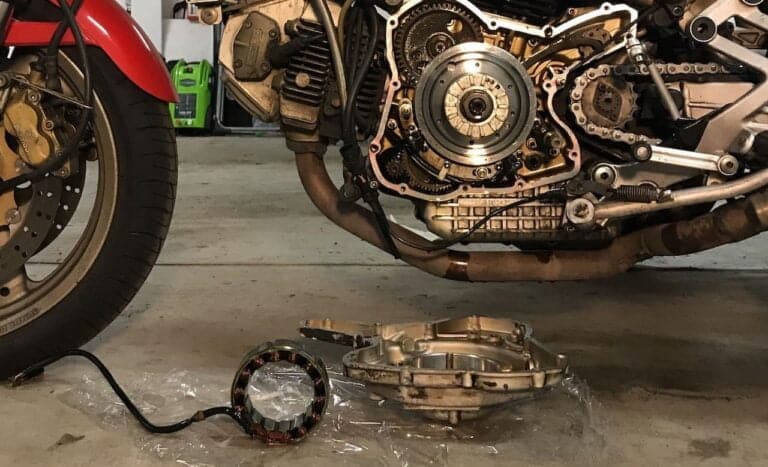
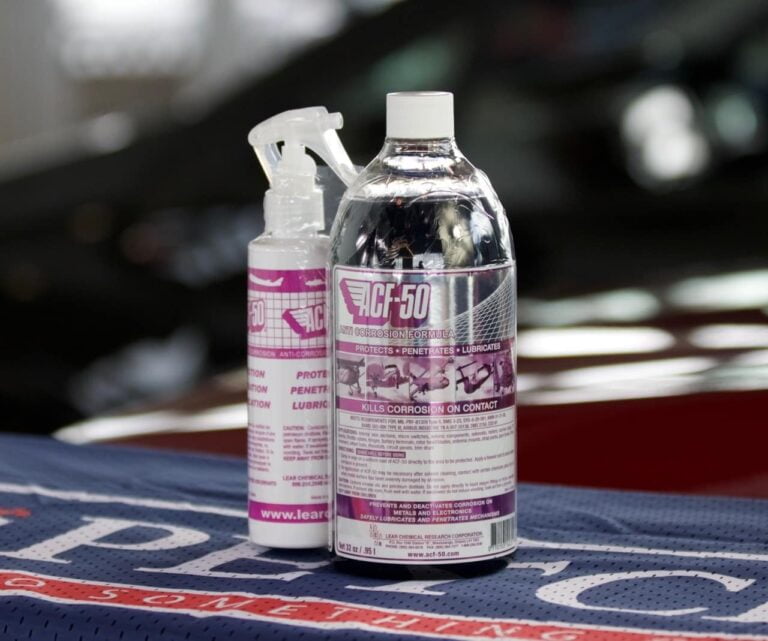
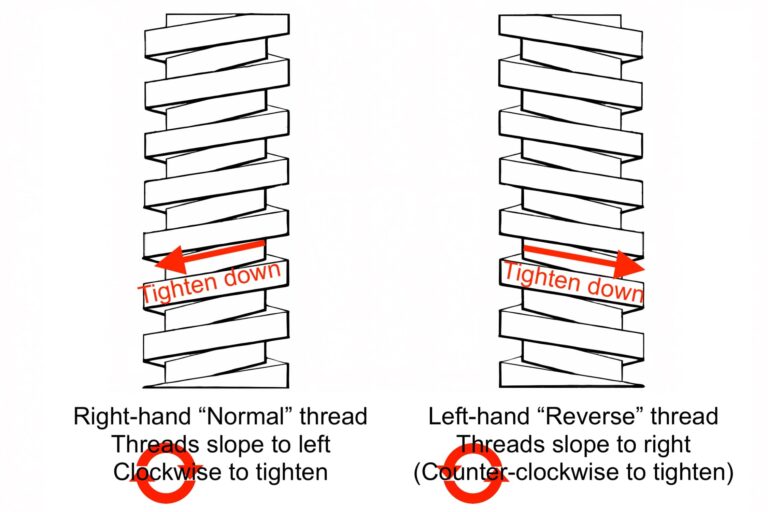
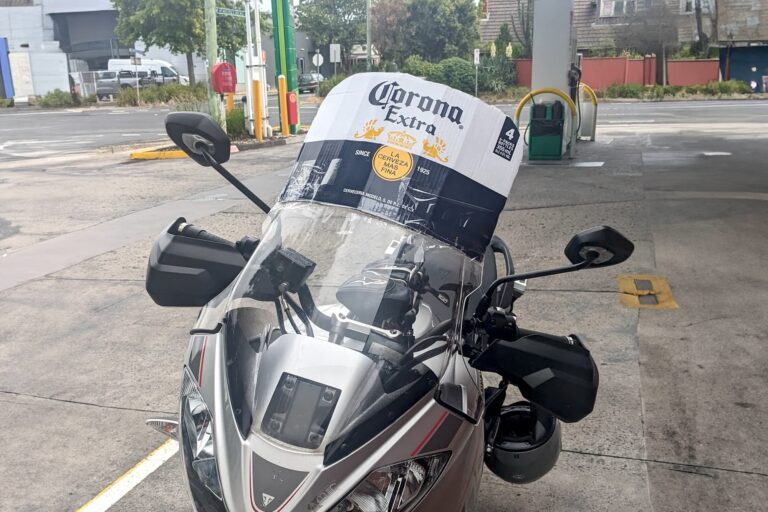
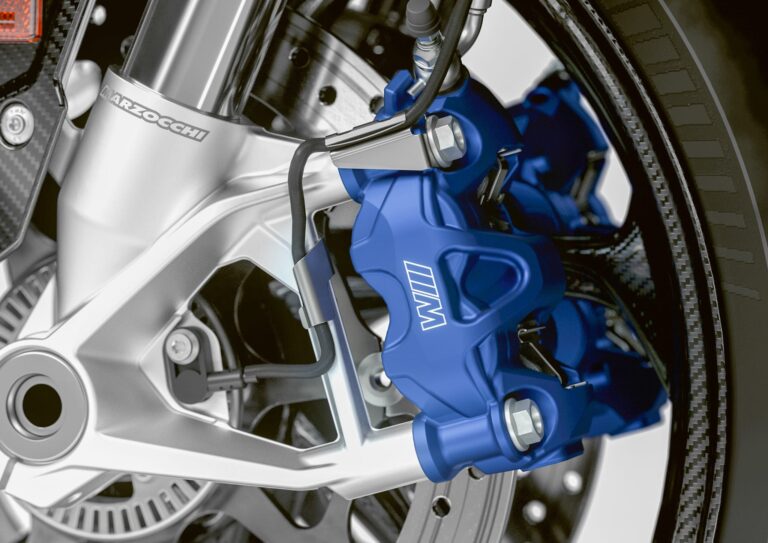
Hi, I guess there is mistake with the spec of Royal Enfield Meteor, it is 350 not 250. To my knowledge, there is no 250cc engine line-up currently in Royal Enfield.
Correct me, if I was wrong!
No, of course you’re right! I sometimes make typos in numbers, especially when writing similar numbers so often. Thanks!